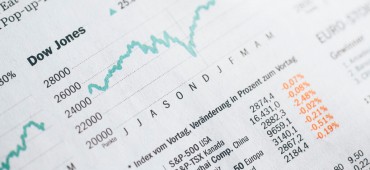
EPS is important when investors look at historical or future EPS numbers for the same company. Or when they want to compare EPS for a few companies in the same industry.
Earnings per share actually mean a measure of how much profit a company has made. It is regularly for companies to announce their earnings per share quarterly or yearly. Earnings per share or EPS is a powerful metric in a company’s earnings estimates since it shows how much of a company’s profit is allocated to each share.
EPS helps to determine the value assigned to each outstanding share of a company.
Earnings per share is a very important part when examining a business’s fundamentals. It is a ratio for profitability or the company’s market prospect. It is always better when this ratio is higher. That indicates the company is profitable and able to distribute more profits to shareholders or to reinvest in the business. In both cases, the shareholders will win.
Despite the fact that this measure is important, a lot of investors never pay attention to the EPS. That could be wrong because the higher EPS can increase the stock price. And that is strange because EPS can cause stock prices to grow and investors are profiting. So, we think that paying attention to EPS is important for making investment decisions.
On the other hand, so many things can influence this ratio, so investors do look at it but don’t let it change their decisions radically.
How to calculate EPS
For example, a company has a net income of $40 million. Preferred stockholders are getting, let’s say, $4 million in dividends. Also, we found that the company has 20 million shares outstanding for the first half of the quarter and also, 24 million for the second half. That would mean the company has an average of 22 million shares.
So, let’s start to calculate earnings per share. We have to count the difference between a company’s net income and dividends paid for the preferred stockholders. The next is to divide that number by the average number of shares outstanding. And here it is:
$40 million – $4 million = $36 million
$36 million / 22 million shares = $1,64/share
So we can conclude this company’s earnings is $1.63 per share.
Diluted EPS
You can see that this basic formula only takes a company’s outstanding common shares into account. But the diluted earnings-per-share calculation takes all convertible securities into consideration. A company might have convertible preferred stocks, warrants or stock options that could theoretically become common stock. If this happens, the result would be a reduction in earnings per share. A company’s diluted earnings per share will always be lower than its basic EPS.
Basic EPS uses net income, deducts preferred dividends, and then divides by the average number of shares of common stock outstanding during the chosen period.
Diluted EPS doesn’t apply the number of shares outstanding. Instead, it takes into account the number of possible shares outstanding. We already mentioned that the companies can issue stock options (for employees, for example), convertible preferred shares, etc. As they theoretically can be turned into shares of stocks, diluted EPS shows us how EPS would look if all convertible securities are converted into stock. The logical consequence is that there will be more shares and diluted EPS is lower than the basic EPS.
Math is important
Imagine you are a stockholder and suddenly the number of stocks rises. Prior, let’s say, you were holding 5% (this a great portion, indeed) of the company but with an increasing number of stocks, your holdings will be smaller and your part in the company’s earnings shrinks. It is just like you have to cut one apple (ouch!) into 8 instead of 6 pieces. You will get a smaller piece.
If our company mentioned above decides to issue for example 8 million convertible preferred shares, the EPS will be lower using the formula we have. Let’s do some math:
$36 million / (22 million + 8 million) = $1.20/share
Diluted EPS is just $1.20 per share. Compare this figure of $1.20 with $1,64 per share.
Where is the point?
Investors have to calculate both EPS and diluted EPS if they want to know when a company is issuing a lot of stock options or other convertible securities. That may have a great impact on shares when the options are exercised. The stock price will fall and shares will dilute.
Of course, it isn’t a sign of weakness if the company is using options to hire experienced employees or to overcome current salary problems, for example. By issuing convertible stock options the company will have more money to support its growth.
It is important to know that when we are calculating EPS for some well-established company the difference between EPS and diluted EPS can be very small or there will be no difference. But smaller companies, for example, some green and growing, may issue a lot of stock options to hire educated staff and experts. So, take it into consideration when estimating the company’s value and making a decision to invest or not.
Weaknesses of earnings per share
As always, even EPS has some drawbacks. It is really good when the company increases its earnings, there is no dilemma. It is a sign that the company is financially stable and it is worth investing in. But if you want to know about the company’s financial health, EPS isn’t the right metric.
Knowing basic and diluted EPS isn’t always simple. We pointed just two examples but some factors may make it more complicated.
For example, the company may issue additional stock shares or buy back some of its own shares or all of them. Also, it can increase its EPS by reducing the number of shares outstanding. In this case, the net income will not increase. So, we can say that companies can direct investors to believe that they are in better shape than they are in reality. The other drawback is that EPS never takes into account a company’s outstanding debt. Also, data about earnings per share doesn’t provide you info about the capital needed to produce the earnings. To put it simply, you are estimating two companies with the same earnings per share and the same income. One operates with less money to reach those earnings. The other company uses more capital. What do you think? Which one is worth investing in? One company is managing its resources better, it is obvious. But you cannot see that in their earnings per share. That’s the problem.
Bottom line
EPS data is a measure of a company’s profits over some time. You have to compare that data to the previous period’s data and if you notice a positive development, meaning increasing earnings, it is a good indicator. Contrary, you will need additional information and explanation to decide what to do with that stock.
Well, there is always a measure against third-party expectations and it can be very useful since it is transparent.
EPS is good when a company’s profits outperform similar companies in the same sector. But even when EPS is good investors sell stocks. The sell-off is caused by something called the “whisper number.” That is the investors’ consensus, based on beliefs about a stock’s future performance. Anyway, EPS and diluted EPS are important measures that every investor should know to calculate and pay attention to.



















